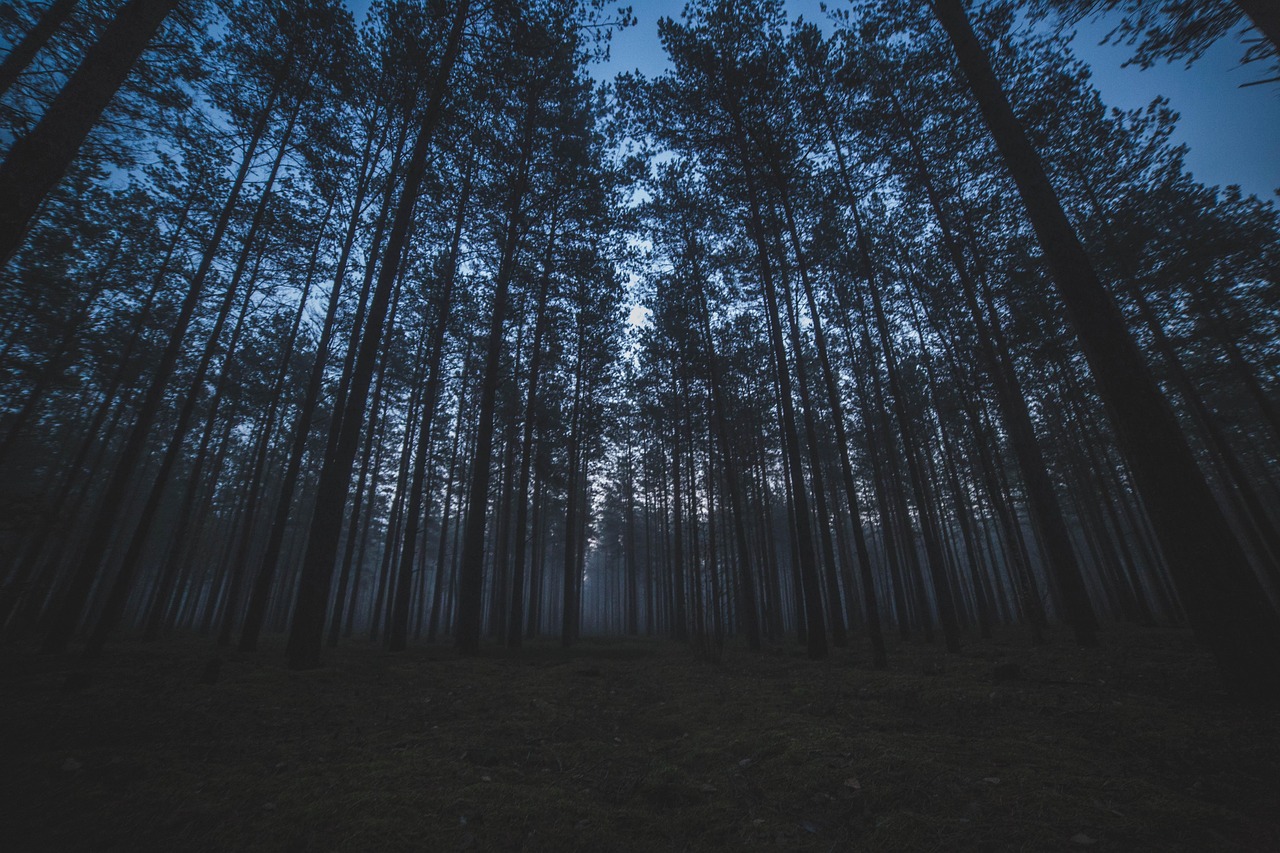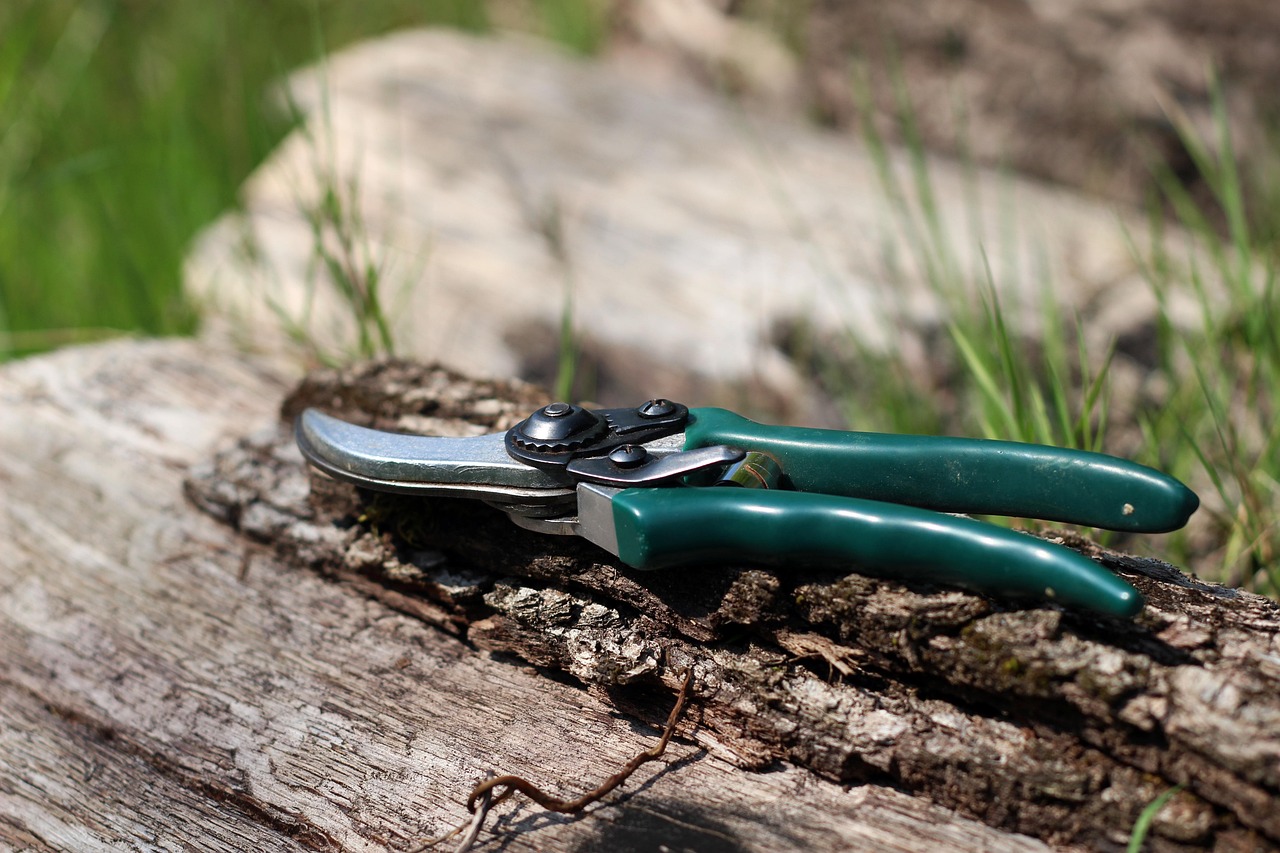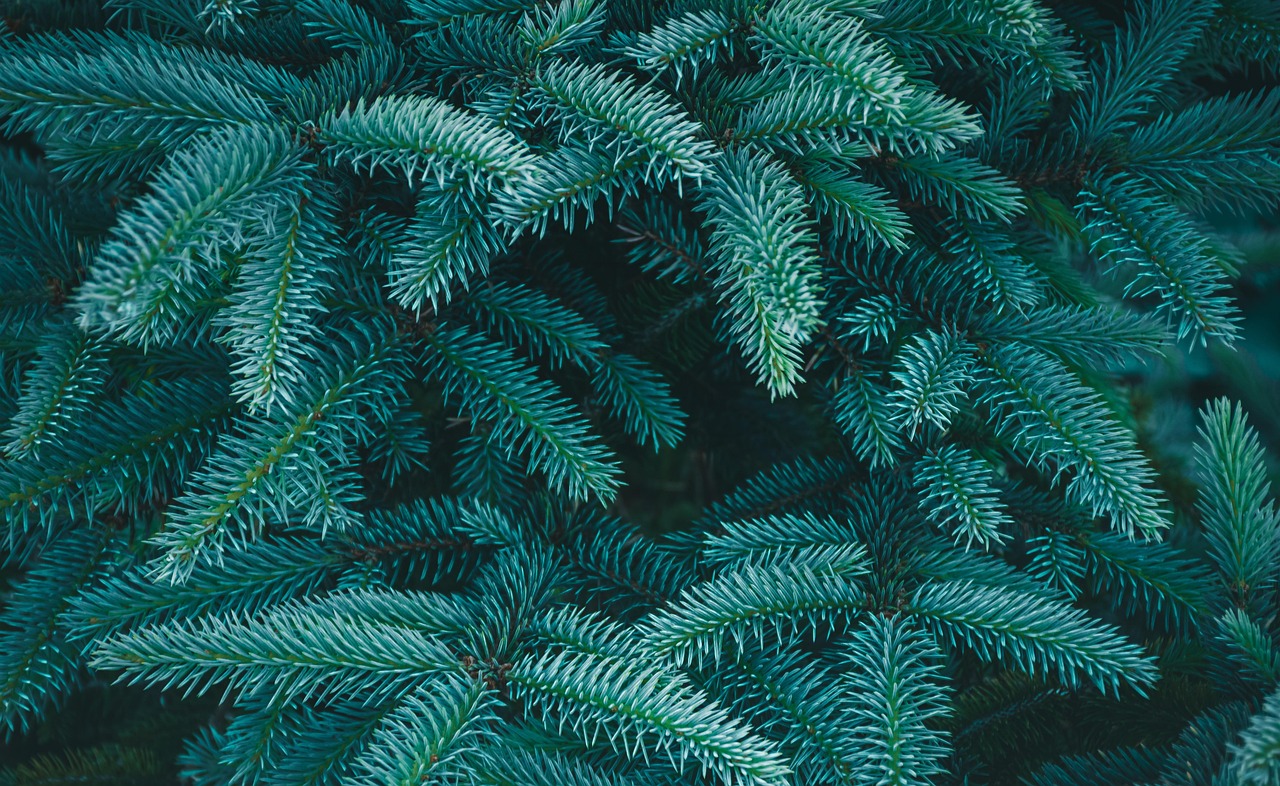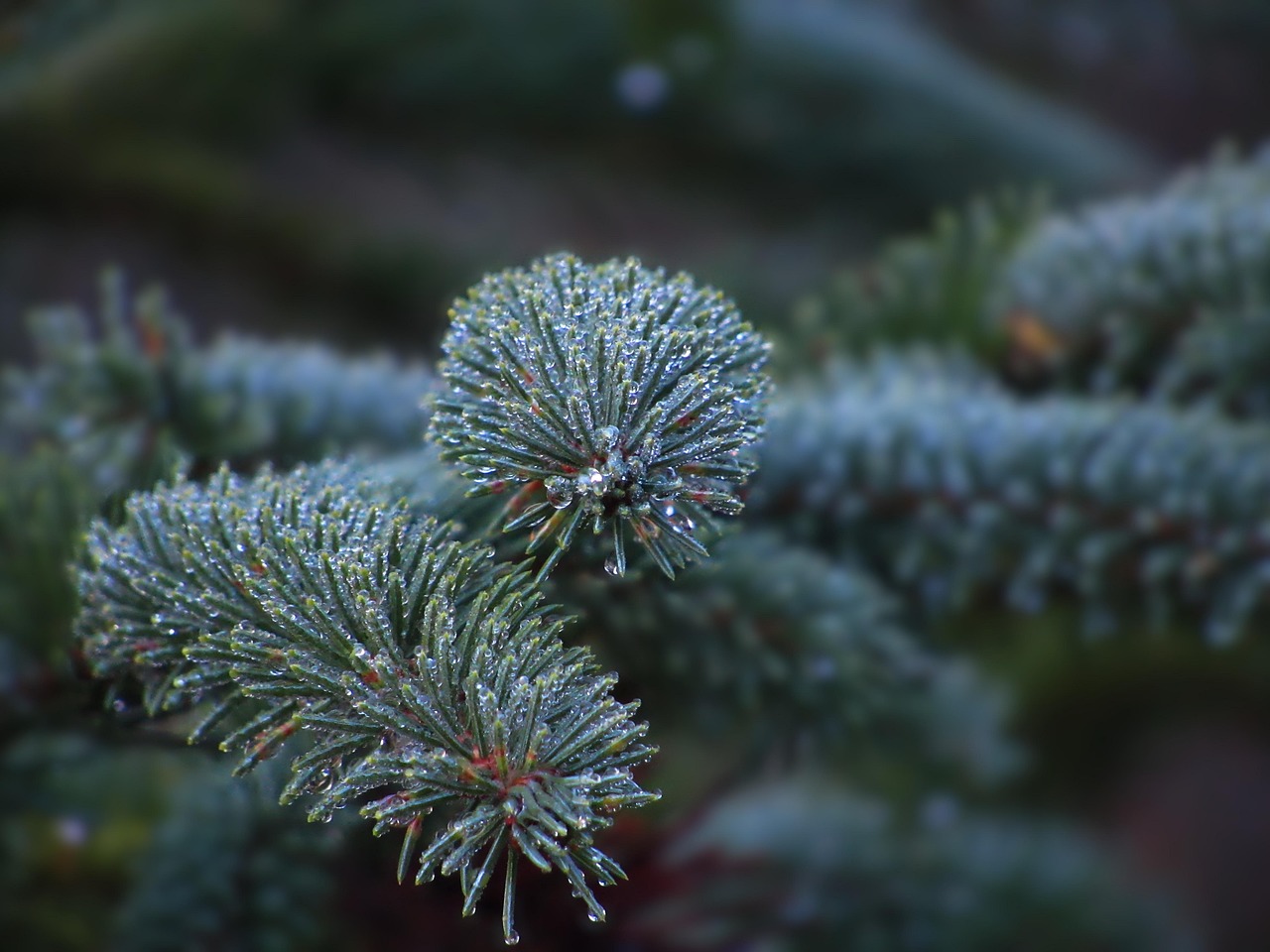Blue spruce pruning for Christmas tree farms is essential for promoting healthy growth and achieving a desirable shape. Proper pruning techniques enhance the tree’s appearance, encourage denser foliage, and improve overall quality, making them more appealing to customers during the holiday season.
Blue spruce, known for its striking blue-green needles and symmetrical shape, is a popular choice for Christmas tree farms. This species, scientifically known as Picea pungens, thrives in various soil types and climates, making it adaptable across many regions. However, to maintain its beauty and health, regular pruning is necessary. Pruning not only helps shape the trees but also fosters better air circulation and sunlight penetration, which are vital for optimal growth.

Understanding the best times and methods for pruning blue spruce is crucial. Generally, the ideal time for pruning is during late winter or early spring before new growth begins. This timing minimizes stress on the tree and promotes vigorous growth once the growing season starts. Additionally, pruning during this period allows growers to see the tree’s structure clearly without the interference of foliage.
Benefits of Pruning Blue Spruce
The benefits of pruning blue spruce trees extend beyond mere aesthetics. By employing proper pruning techniques, farmers can ensure a healthier tree that meets market demands. Here are some key benefits:
- Enhanced Shape: Regular pruning helps maintain a symmetrical and pleasing shape, which is vital for Christmas tree sales.
- Improved Air Circulation: Reducing overcrowded branches enhances airflow, reducing the risk of disease.
- Increased Sunlight Penetration: Pruning allows sunlight to reach all parts of the tree, promoting even growth.
- Fewer Pests: Pruned trees are less attractive to pests and diseases, resulting in healthier trees overall.
Proper pruning techniques can significantly impact the growth and quality of blue spruce trees. The types of cuts made during pruning can vary depending on the desired outcome. Thinning cuts remove entire branches to improve airflow. Heading cuts shorten branches to encourage bushier growth. Understanding these techniques is essential for effective pruning.

Pruning Techniques for Blue Spruce
When it comes to pruning blue spruce, there are several techniques that growers can use to achieve optimal results. Each technique serves a specific purpose and should be applied thoughtfully.
Thinning
Thinning involves removing entire branches from the tree to reduce density. This method is particularly useful when branches are overcrowded or when interior growth is insufficient. Thinning enhances airflow and light penetration, which can lead to healthier growth patterns.
Heading
Heading cuts are used to shorten branches, promoting bushier growth. This technique encourages lateral branching and is especially useful for creating a fuller appearance in young trees. It’s important to make heading cuts just above a bud to stimulate new growth effectively.

Cleaning
Cleaning involves removing dead or damaged branches. This not only improves the tree’s appearance but also helps prevent diseases from spreading. Regular cleaning should be part of any maintenance routine on a Christmas tree farm.
| Pruning Technique | Description | Benefits |
|---|---|---|
| Thinning | Removing entire branches to reduce density. | Improves airflow and light penetration. |
| Heading | Shortening branches to promote bushier growth. | Encourages fuller appearance and lateral branching. |
| Cleaning | Removing dead or damaged branches. | Enhances appearance and reduces disease risk. |
Before starting the pruning process, growers should equip themselves with the right tools. Sharp pruners, loppers, and saws are essential for making clean cuts that heal quickly. Using dull tools can cause damage to the tree and increase the likelihood of infection.
An important aspect of pruning blue spruce is timing. Late winter or early spring is ideal because it allows for easy identification of the tree’s structure without foliage obscuring view. Additionally, pruning too late in the season can disrupt new growth, while pruning too early may expose trees to harsh weather conditions.

After pruning, care must be taken to monitor the trees for any signs of stress or disease. Regular inspections will help identify any issues early on, ensuring that the trees remain healthy throughout the growing season.
Common Mistakes in Blue Spruce Pruning
Even experienced growers can make mistakes when pruning blue spruce trees. Understanding these common pitfalls can help ensure that trees remain healthy and attractive. Here are some frequent errors to avoid:
- Over-Pruning: Removing too many branches can lead to stress and hinder growth. It is essential to prune selectively.
- Incorrect Timing: Pruning at the wrong time can damage new growth or expose trees to harsh weather conditions.
- Poor Cuts: Making jagged or improper cuts can lead to infections. Always use sharp tools and make clean cuts.
- Neglecting Tree Health: Failing to monitor the tree’s overall health before and after pruning can result in missed signs of disease.
By being aware of these mistakes, growers can take proactive steps to ensure the health and beauty of their blue spruce trees. Learning proper techniques and maintaining good practices will contribute to the farm’s overall productivity.
Seasonal Care for Blue Spruce
In addition to pruning, seasonal care is crucial for maintaining the health of blue spruce trees on Christmas tree farms. Each season presents unique challenges and opportunities for care. Here’s a breakdown of seasonal tasks:
Spring Care
Spring is a critical time for growth. After pruning, it is essential to:
- Apply mulch around the base of the trees to retain moisture and suppress weeds.
- Fertilize with a balanced fertilizer to support new growth.
- Monitor for pests and diseases as new growth emerges.
Summer Care
During the summer months, the focus shifts to maintaining health and vigor:
- Water regularly, especially during dry spells, to ensure adequate hydration.
- Inspect for any signs of stress, such as yellowing needles or stunted growth.
- Continue monitoring for pests, as summer can be peak season for infestations.
Fall Care
As fall approaches, preparations for winter become paramount:
- Conduct a final inspection of trees before winter to identify any remaining issues.
- Apply protective measures against winter pests, such as wrapping trunks if necessary.
- Ensure adequate drainage around tree bases to prevent root rot from melting snow.
Winter Care
In winter, the focus shifts to protection:
- Avoid heavy snow accumulation on branches by gently shaking them off if safe to do so.
- Check for ice damage on branches and remove any broken limbs in early spring.
Pest and Disease Management
Blue spruce trees can be susceptible to various pests and diseases that may affect their health and appearance. Identifying and managing these threats is crucial for a successful Christmas tree farm. Here are some common issues:
Pests
- Aphids: These small insects suck sap from the tree, leading to yellowing needles and stunted growth. Regular monitoring and insecticidal soap applications can help manage infestations.
- Bark Beetles: These pests bore into the bark, causing damage that can be fatal. Maintaining tree health through proper care can help prevent infestations.
- Spider Mites: Often found in hot, dry conditions, these tiny pests create webs and cause needle drop. Increasing humidity through regular watering can reduce their presence.
Diseases
- Needle Cast: This fungal disease affects needle health, causing them to brown and drop prematurely. Proper pruning and spacing can improve air circulation and reduce disease incidence.
- Root Rot: Caused by overwatering or poor drainage, root rot leads to tree decline. Ensuring good drainage and avoiding excessive watering during wet seasons are key preventive measures.
| Pest/Disease | Description | Management Strategies |
|---|---|---|
| Aphids | Small insects that suck sap from trees. | Monitor regularly; use insecticidal soap as needed. |
| Bark Beetles | Pests that bore into the bark, causing damage. | Maintain tree health; monitor for signs of infestation. |
| Needle Cast | A fungal disease leading to needle drop. | Practice proper pruning; improve air circulation. |
| Root Rot | Disease caused by overwatering or poor drainage. | Avoid excessive watering; ensure good drainage. |
By implementing a comprehensive pest and disease management strategy, Christmas tree farmers can protect their blue spruce trees from potential threats. Regular monitoring and prompt action are key components in maintaining tree health throughout the year.
Marketing Blue Spruce Christmas Trees
Successfully marketing blue spruce Christmas trees is essential for maximizing profits on a Christmas tree farm. With the right strategies, farmers can attract customers and ensure their trees stand out in a competitive market. Here are some effective marketing strategies to consider:
Building a Brand
Establishing a strong brand presence helps create a memorable identity for your Christmas tree farm. Consider these steps:
- Create a Unique Name: Choose a name that reflects the quality and characteristics of your trees.
- Design a Logo: A professional logo can enhance recognition and attract customers.
- Develop a Website: A user-friendly website provides information about tree varieties, pricing, and farm hours.
Utilizing Social Media
Social media platforms are powerful tools for engaging with potential customers. Here are some tips for effective use:
- Share Visual Content: Post high-quality images of your blue spruce trees, especially during the holiday season.
- Engage with Followers: Respond to comments and messages promptly to build relationships with your audience.
- Promote Events: Use social media to announce special events, such as tree cutting days or family activities.
Creating an Engaging Customer Experience
Customers are more likely to return if they have a positive experience at your farm. Here are ways to enhance their visit:
Farm Tours
Offering guided tours can provide customers with insight into how your trees are grown and cared for. This educational aspect can create a deeper connection with your product.
Family Activities
Incorporate fun activities for families to enjoy while selecting their Christmas tree:
- Hayrides: Organize hayrides around the farm to create a festive atmosphere.
- Photo Opportunities: Set up designated areas for family photos, complete with holiday decorations.
- Pine Cone Craft Stations: Provide materials for children to create crafts, enhancing their overall experience.
Promotions and Discounts
Offering promotions can attract more customers, especially during peak shopping times. Here are some ideas:
- Early Bird Specials: Offer discounts for customers who purchase trees early in the season.
- Referral Discounts: Encourage existing customers to refer friends by providing discounts for both parties.
- Loyalty Programs: Implement a loyalty program that rewards returning customers with discounts on future purchases.
Collaborations and Partnerships
Forming partnerships with local businesses can expand your reach and attract more customers. Consider these collaboration opportunities:
Local Markets
Selling your blue spruce trees at local farmers’ markets can increase visibility and reach potential customers who may not visit the farm directly.
Community Events
Participating in community events, such as holiday fairs or parades, can enhance your brand’s visibility. Set up a booth to showcase your trees and engage with attendees.
Catering to Local Businesses
Establish relationships with local businesses, such as restaurants or hotels, that may want to purchase trees for decoration. Offering bulk discounts can make this arrangement mutually beneficial.
The Importance of Customer Feedback
Gathering customer feedback is vital for improving services and products. Understanding what customers appreciate and what they feel could be enhanced can guide future marketing efforts.
- Satisfaction Surveys: Distributing surveys after the holiday season can provide valuable insights into customer experiences.
- Online Reviews: Encourage satisfied customers to leave positive reviews on platforms like Google or Yelp to enhance credibility.
- Feedback Forms: Provide feedback forms at the farm for customers to share their thoughts while the experience is fresh in their minds.
Sustainability Practices in Tree Farming
Sustainability is becoming increasingly important to consumers. Implementing eco-friendly practices can attract environmentally conscious customers and enhance your farm’s reputation.
Recycling Trees
Create a program where customers can return their used Christmas trees after the holiday season. This initiative promotes recycling and sustainability while providing a unique selling point.
Pest Management without Chemicals
Utilizing natural pest management strategies can appeal to customers who prioritize organic practices. Integrated pest management (IPM) techniques can help maintain tree health without harmful chemicals.
Conservation Practices
Incorporate conservation practices such as water conservation techniques and soil health management. Educating consumers on these efforts can further enhance your brand image.
By focusing on marketing strategies, creating engaging customer experiences, and prioritizing sustainability, blue spruce Christmas tree farms can thrive in a competitive landscape. Each of these elements plays a crucial role in attracting customers and building a successful business. As the holiday season approaches, implementing these strategies will help ensure that your farm stands out in the minds of consumers.
As Christmas tree farms continue to evolve, it is essential for growers to stay informed about best practices, particularly in areas such as pruning, pest management, and marketing. The blue spruce, with its striking appearance and popularity among consumers, requires dedicated attention to achieve optimal growth and quality. By implementing the strategies discussed throughout this article, farmers can ensure the health of their trees while enhancing their marketability.
Advanced Pruning Techniques
In addition to the basic pruning techniques outlined earlier, there are advanced strategies that can further improve the health and aesthetics of blue spruce trees. These methods require a deeper understanding of tree biology and may involve specialized tools.
Structural Pruning
Structural pruning focuses on developing a strong framework for the tree. This technique is especially important for young trees. Key elements include:
- Identifying the Central Leader: The central leader is the main vertical stem of the tree. It should be encouraged to grow tall and straight.
- Removing Competing Leaders: If multiple leaders are present, select one to keep and remove the others to avoid forked growth.
- Encouraging Lateral Branch Growth: By selectively pruning side branches, growers can promote a more balanced and robust structure.
Seasonal Shaping
Another advanced technique involves shaping trees seasonally. This method can enhance the overall appearance of blue spruce trees as they mature. Consider these practices:
- Summer Pruning: In addition to winter pruning, light trimming in summer can help control growth and shape.
- Targeted Growth Control: Focus on reducing overly vigorous branches while allowing slower-growing branches to flourish.
Using Technology in Tree Farming
The integration of technology into Christmas tree farming can improve efficiency and productivity. Here are some technological advancements to consider:
Drones for Monitoring
Drones can be used to survey tree health from an aerial perspective. This technology allows farmers to:
- Identify areas of stress due to pests or diseases.
- Monitor growth patterns across large fields.
- Assess irrigation needs more effectively.
Soil Sensors
Soil sensors provide real-time data about soil moisture levels and nutrient content. Utilizing these sensors can help farmers:
- Optimize irrigation schedules based on actual moisture needs.
- Make informed decisions about fertilization.
- Monitor soil health over time, leading to better long-term crop management.
Engaging with the Community
A successful Christmas tree farm is often deeply rooted in its community. Engaging with local residents can foster goodwill and support for your business:
- Community Events: Host seasonal events that bring families together, such as tree lighting ceremonies or holiday markets.
- Local Schools: Partner with schools for educational field trips, where students can learn about tree farming and environmental responsibility.
- Charitable Contributions: Consider donating trees to local charities or schools, reinforcing your commitment to the community.
Final Thoughts
Blue spruce pruning for Christmas tree farms encompasses a wide range of practices aimed at promoting healthy growth and increasing market appeal. From understanding the nuances of effective pruning techniques to leveraging technology and engaging with local communities, there are numerous ways for farmers to succeed in this competitive landscape.
The emphasis on sustainability, particularly in pest management and conservation practices, is increasingly important as consumers become more environmentally conscious. By adopting eco-friendly methods and ensuring high-quality products, farmers can not only meet customer expectations but also contribute positively to their community and environment.
As the holiday season approaches, implementing these strategies will not only enhance the quality of blue spruce trees but also create memorable experiences for customers. With dedicated care, innovative practices, and community engagement, Christmas tree farms can thrive and continue to be a cherished part of holiday traditions.
